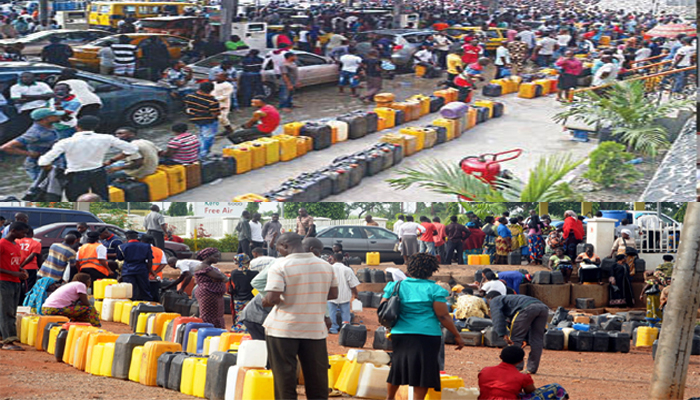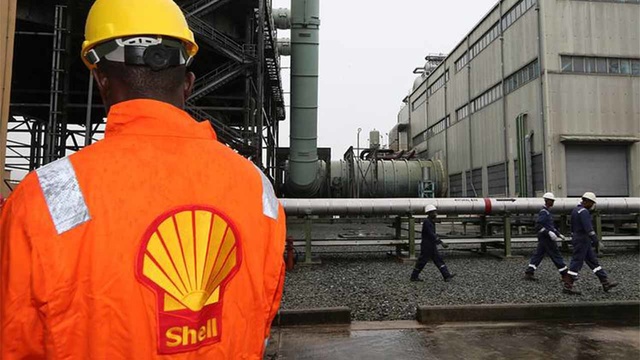COP26 vs COP27: Rich countries cut Adaptation Fund pledge by 36%, send disappointing signals to poor countries

Oredola Adeola
The 27th Session of the Conference of Parties COP27, on United Nations Framework Convention on Climate Change, ended in Sharm El-Sheikh, Egypt, on Sunday, as Adaptation Fund pledged by richer nations dropped by 36 percent, to US$ 230 million from US$ 356 million pledged in COP26, Glasgow, last year, being finance provided for low- and middle-income countries(LMICs) to protect themselves against the impacts of climate change.
EnergyDay’s check showed that the adaptation fund, which was set up under the Kyoto Protocol of UNFCCC, was expected to be deployed as a form of loan to finance the installation of solar panels or wind farms to reduce fossil-fuel use projects in the countries. It is also targeted at strengthening flood defenses or provide sunlight-reflecting cool roofs for households.
Expert views gathered by EnergyDay showed that the fund cut by the developed nations is a disappointing gesture towards the vulnerable communities who needed the commitment of the developed countries to protect themselves adequately from severe climate impacts.
The experts revealed that this latest development is happening despite a UN call in the Glasgow Climate Pact to developed countries for increasing adaptation finance substantially.
They lamented that the fund crunch is likely to magnify the impact of climate change on vulnerable countries due to the absence of adequate adaptation safeguards.
Despite the funding cut, the breakthrough agreement achieved during COP27 provided “loss and damage” funding for vulnerable countries hit hard by climate disasters such as loss of life and the destruction of homes and farmland.
Since 2010, the Adaptation Fund has committed US$ 923.5 million to projects and programmes to date. It has been channeled into the execution of about 140 projects globally, of which seven are in India and spread across the country.
The United Kingdom has said Nigeria would get a £95 million investment fund to support climate-resilient agriculture, CRA, in the country.
Mikko Ollikainen, head of the Adaptation Fund, said “So far only 60 percent of the pledged amount in Glasgow has been actually realised. That puts in the shade the role of developed countries in countering global climate impact.
The comparatively reduced pledge in Sharm El-Sheikh is despite the Glasgow Climate Pact urging “developed country parties to urgently and significantly scale up their provision of climate finance, for adaptation so as to respond to the needs of developing country parties …”.
The latest draft negotiation text at COP27 Sharm El-Sheikh said, “with serious concern the existing adaption gap between current levels of adaptation and levels needed to respond to impacts and reduce climate risks in line with findings from the contribution of Working Group II to the Intergovernmental Panel on Climate Change Sixth Assessment Report”.
It further recognizes, “the centrality of the role of the adaptation fund in the climate finance architecture” and urged “all contributors to fulfill their pledges in a timely manner”.
Apart from the US, Germany, Spain, Sweden, and Japan paid more than $10 million while various other countries made smaller contributions.
While Germany remains the main provider, funds have also started to flow from new countries like Austria, Japan, Iceland, and the Republic of Korea.
John Kerry, US special presidential envoy for climate, observed that the Adaptation Fund “is already proving itself to be remarkably effective,” and promised $100 million in line to President Joe Biden’s earlier comment about doubling the Adaptation Fund support.
“We have so far received about 60 percent of the money pledged during the Glasgow COP; few major country pledges are stated to be stuck in respective internal clearances.
“We have so far allocated about $1 billion of around $1.3 billion for around 140 concrete adaptation projects in about 100 developing countries including India covering 38 million beneficiaries. But definitely, we need much more support from all sources to expand the Fund’s reach, as adaptation is a key instrument in countering climate change in developing countries,” Ollikainen added.
The Adaptation Fund office however disclosed that the board still has enough money to approve projects but indicated that more money is required from all sources.
“While we say all sources, we mean literally all sources including public and private sources; private sources are important as only public sources will clearly not be adequate.
COMMITMENT TO EMISSION TARGET
EnergyDay’s check showed, despite reduced adoption funding, COP27 resulted in countries delivering a package of decisions that reaffirmed their commitment to limit global temperature rise to 1.5 degrees Celsius above pre-industrial levels.
The package also strengthened action by countries to cut greenhouse gas emissions and adapt to the inevitable impacts of climate change, as well as boosting the support of finance, technology, and capacity building needed by developing countries.
Simon Stiell, UN Climate Change Executive Secretary, while commenting on the outcome of the summit said, “This outcome moves us forward. We have determined a way forward on a decades-long conversation on funding for loss and damage – deliberating over how we address the impacts on communities whose lives and livelihoods have been ruined by the very worst impacts of climate change.”
According to the statement issued after the summit by the UN Climate Change secretariat, “Creating a specific fund for loss and damage marked an important point of progress, with the issue added to the official agenda and adopted for the first time at COP27.
“Governments took the ground-breaking decision to establish new funding arrangements, as well as a dedicated fund, to assist developing countries in responding to loss and damage.
“Governments also agreed to establish a ‘transitional committee to make recommendations on how to operationalize both the new funding arrangements and the fund at COP28 next year. The first meeting of the transitional committee is expected to take place before the end of March 2023.
“Parties also agreed on the institutional arrangements to operationalize the Santiago Network for Loss and Damage, to catalyze technical assistance to developing countries that are particularly vulnerable to the adverse effects of climate change.
COP27 President Sameh Shoukry announced the Sharm el-Sheikh Adaptation Agenda, enhancing resilience for people living in the most climate-vulnerable communities by 2030. UN Climate Change’s Standing Committee on Finance was requested to prepare a report on doubling adaptation finance for consideration at COP28 next year.
The cover decision, known as the Sharm el-Sheikh Implementation Plan, highlights that a global transformation to a low-carbon economy is expected to require investments of at least USD 4-6 trillion a year.
Delivering such funding will require a swift and comprehensive transformation of the financial system and its structures and processes, engaging governments, central banks, commercial banks, institutional investors, and other financial actors.
Serious concern was expressed that the goal of developed country Parties to mobilize jointly USD 100 billion per year by 2020 has not yet been met, with developed countries urged to meet the goal, and multilateral development banks and international financial institutions called on to mobilize climate finance.
At COP27, deliberations continued on setting a ‘new collective quantified goal on climate finance’ in 2024, taking into account the needs and priorities of developing countries.
The World Leaders Summit, held over two days during the first week of the conference, convened six high-level roundtable discussions. The discussions highlighted solutions – on themes including food security, vulnerable communities, and just transition – to chart a path to overcome climate challenges and how to provide the finance, resources, and tools to effectively deliver climate action at scale.
COP27 brought together more than 45,000 participants to share ideas and solutions, and build partnerships and coalitions. Indigenous peoples, local communities, cities, and civil society, including youth and children, showcased how they are addressing climate change and shared how it impacts their lives.
The decisions taken at the COP27, also reemphasized the critical importance of empowering all stakeholders to engage in climate action; in particular through the five-year action plan on Action for Climate Empowerment and the intermediate review of the Gender Action Plan.
These outcomes will allow all Parties to work together to address imbalances in participation and provide stakeholders with the tools required to drive greater and more inclusive climate action at all levels.
Young people in particular were given greater prominence at COP27, with UN Climate Change’s Executive Secretary promising to urge governments to not just listen to the solutions put forward by young people but to incorporate those solutions in decision and policy-making. Young people made their voices heard through the first-of-its-kind pavilion for children and youth, as well as the first-ever youth-led Climate Forum.
In parallel with the formal negotiations, the Global Climate Action space at COP27 provided a platform for governments, businesses, and civil society to collaborate and showcase their real-world climate solutions.
The UN Climate Change High-Level Champions held a two-week program of more than 50 events. This included a number of major African-led initiatives to cut emissions and build climate resilience and significant work on the mobilization of finance.
COP27 President Sameh Shoukry said, “The work that we’ve managed to do here in the past two weeks, and the results we have together achieved, are a testament to our collective will, as a community of nations, to voice a clear message that rings loudly today, here in this room and around the world: that multilateral diplomacy still works.
“Despite the difficulties and challenges of our times, the divergence of views, level of ambition or apprehension, we remain committed to the fight against climate change. We rose to the occasion, upheld our responsibilities, and undertook the important decisive political decisions that millions around the world expect from us.”
THE FOLLOWING IS A SUMMARY OF SOME KEY OUTCOMES OF COP27
Technology
COP27 saw the launch of a new five-year work program at COP27 to promote climate technology solutions in developing countries.
Mitigation
COP27 significantly advanced the work on mitigation. A mitigation work programme was launched in Sharm el-Sheikh, aimed at urgently scaling up mitigation ambition and implementation.
The work programme will start immediately following COP27 and continue until 2030, with at least two global dialogues held each year. Governments were also requested to revisit and strengthen the 2030 targets in their national climate plans by the end of 2023, as well as accelerate efforts to phase down unabated coal power and phase out inefficient fossil fuel subsidies.
The decision text recognizes that the unprecedented global energy crisis underlines the urgency to rapidly transform energy systems to be more secure, reliable, and resilient, by accelerating clean and just transitions to renewable energy during this critical decade of action.
Global Stocktake
Delegates at the UN Climate Change Conference COP27 wrapped up the second technical dialogue of the first global stocktake, a mechanism to raise ambition under the Paris Agreement.
The UN Secretary-General will convene a ‘climate ambition summit’ in 2023, ahead of the conclusion of the stocktake at COP28 next year.
The conference heard many announcements:
Countries launched a package of 25 new collaborative actions in five key areas: power, road transport, steel, hydrogen, and agriculture.
UN Secretary-General António Guterres announced a USD 3.1 billion plan to ensure everyone on the planet is protected by early warning systems within the next five years.
The UN Secretary-General’s High-Level Expert Group on Net-Zero Commitments published a report at COP27, serving as a how-to guide to ensure credible, accountable net-zero pledges by industry, financial institutions, cities, and regions.
A G7-led plan called the Global Shield Financing Facility was launched at COP27 to provide funding to countries suffering climate disasters.
Announcing a total of USD 105.6 million in new funding, Denmark, Finland, Germany, Ireland, Slovenia, Sweden, Switzerland, and the Walloon Region of Belgium, stressed the need for even more support for the Global Environment Facility funds targeting the immediate climate adaptation needs of low-lying and low-income states.
The new Indonesia Just Energy Transition Partnership, announced at the G20 Summit held in parallel with COP27, will mobilize USD 20 billion over the next three to five years to accelerate a just energy transition.
Important progress was made on forest protection with the launch of the Forest and Climate Leaders’ Partnership, which aims to unite action by governments, businesses and community leaders to halt forest loss and land degradation by 2030.




